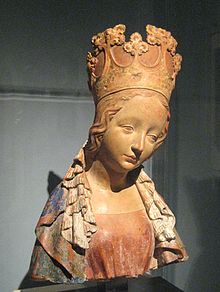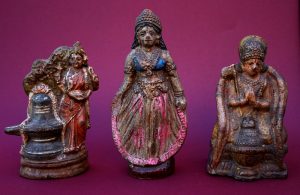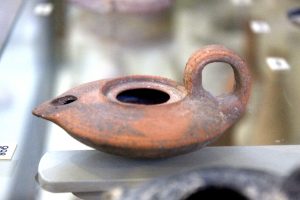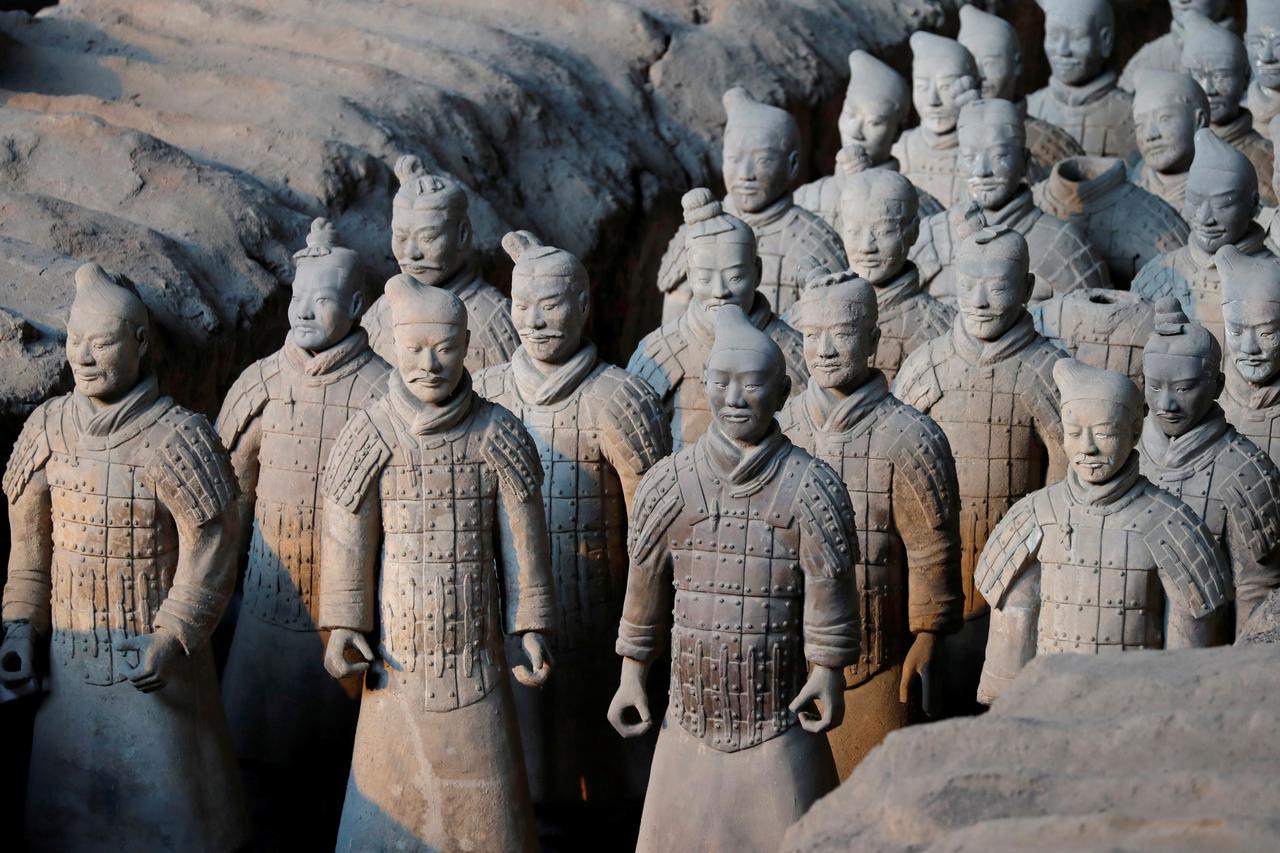Terracotta is the term normally used for sculpture made in earthenware, and also for various practical uses including vessels (notably flower pots), water and wastewater pipes, roofing tiles, bricks, and surface embellishment in building construction.
Terracotta art
The term is also used to refer to the natural brownish-orange colour of most terracotta, which varies considerably. In fine art, the word Terracotta (“baked earth”) is most commonly used to describe a type of sculpture, unglazed ceramic art, or decorative architecture, made from a coarse, porous clay, which is noted for its versatility, cheapness and durability.
In addition, ever since the era of Mesopotamian art along the Tigris and Euphrates, and Egyptian art along the Nile, terracotta bricks and tiles have been used for centuries in the building of domestic as well as civic structures.
Terracotta was widely used in ancient art, notably in Chinese Pottery (from 10,000 BCE) and in Greek Pottery (from 7,000 BCE), as well as Mesopotamian sculpture and Egyptian sculpture, plus Minoan art from Crete, and Etruscan art on the Italian mainland.
Terracotta statues were prevalent in Greek architecture – notably for temple decoration – while terracotta reliefs were a common feature of Roman architecture. The art of terracotta was revived during the Italian Renaissance, and underwent a further revival during the 19th century.

In Art & History
Terracotta female figurines were uncovered by archaeologists in excavations of Mohegan-daro, Pakistan (3000–1500 BC). Along with phallus-shaped stones, these suggest some sort of fertility cult. European medieval art made little use of terracotta sculpture, until the late 14th century when it became used in advanced International Gothic workshops in parts of Germany.
The Virgin illustrated at the start of the article from Bohemia is a unique example known from there. A few decades later there was a revival in the Italian Renaissance, inspired by excavated classical terracottas as well as the German examples, which gradually spread to the rest of Europe.
In Florence Luca della Robbia (1399/1400–1482) was a sculptor who founded a family dynasty specializing in glazed and painted terracotta, especially large roundels which were used to decorate the exterior of churches and other buildings.
These used the same techniques as contemporary maiolica and other tin-glazed pottery. Other sculptors included Pietro Torrigiano (1472–1528), who produced statues, and in England busts of the Tudor royal family. The unglazed busts of the Roman Emperors adorning Hampton Court Palace, by Giovanni da Maiano, 1521, were another example of Italian work in England.[18] They were originally painted but this has now been lost from weathering

(late 6th century BCE)
National Etruscan Museum,
Villa Giulia, Rome.
Indian sculpture made heavy use of terracotta from as early as the Indus Valley Civilisation (with stone and metal sculpture being rather rare), and in more sophisticated areas had largely abandoned modelling for using moulds by the 1st century BC.
This allows relatively large figures, nearly up to life-size, to be made, especially in the Gupta period and the centuries immediately following it. Several vigorous local popular traditions of terracotta folk sculpture remain active today, such as the Bankura horses.

Advantages in sculpture
As compared to bronze sculpture, terracotta uses a far simpler and quicker process for creating the finished work with much lower material costs. The easier task of modelling, typically with a limited range of knives and wooden shaping tools, but mainly using the fingers, allows the artist to take a more free and flexible approach.
Small details that might be impractical to carve in stone, of hair or costume for example, can easily be accomplished in terracotta, and drapery can sometimes be made up of thin sheets of clay that make it much easier to achieve a realistic effect.

Reusable mold-making techniques may be used for the production of many identical pieces. Compared to marble sculpture and other stonework the finished product is far lighter and maybe further painted and glazed to produce objects with colour or durable simulations of metal patina.
Robust durable works for outdoor use require greater thickness and so will be heavier, with more care needed in the drying of the unfinished piece to prevent cracking as the material shrinks. Structural considerations are similar to those required for stone sculpture; there is a limit on the stress that can be imposed on terracotta, and terracotta statues of unsupported standing figures are limited to well under life-size unless extra structural support is added.
This is also because large figures are extremely difficult to fire, and surviving examples often show sagging or cracks. The Yixian figures were fired in several pieces, and have iron rods inside to hold the structure together.



